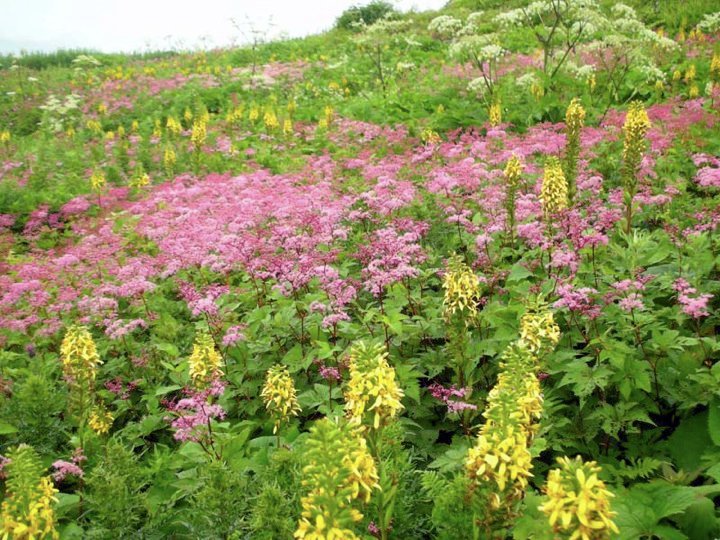Forum Replies Created
-
AuthorPosts
-
August 30, 2010 at 2:18 pm #176710
 Yuko TanabeParticipant
Yuko TanabeParticipantGood guess! This place is completely covered in snow in winter, and Mt. Ibuki is better known as a skiing resort.
August 30, 2010 at 9:45 am #176712 Yuko TanabeParticipant
Yuko TanabeParticipantWow you know more than Japanese people!
Thank you for sharing!
If you are based in Kobe, please check out Mt. Ibuki in Shiga prefecture for rich flora. It’s a magical place, seriously. The best season is late July~mid August, just gone…
 April 15, 2010 at 9:40 am #170163
April 15, 2010 at 9:40 am #170163 Yuko TanabeParticipant
Yuko TanabeParticipantI am. Very.
But my experience is slightly less to be eligible.
9 years post graduate, 1 year in the Middle East.Never mind.
I keep looking for some more suitable work in Dubai.Thank you for posting.
July 23, 2009 at 11:18 am #173628 Yuko TanabeParticipant
Yuko TanabeParticipantThank you Aurelien.
I have found out that the place is the wisteria walk at Hermannshof, Germany
Photograph by Jerry Harpur
Additional info is as following;
The Wisteria Walk (75 yards) of Wisteria floribunda ‘Macrobotrys longissima’Heavenly beautiful, isn’t it?
January 20, 2009 at 5:22 am #176512 Yuko TanabeParticipant
Yuko TanabeParticipantBreath taking job! Wow!
December 16, 2008 at 2:18 pm #176706 Yuko TanabeParticipant
Yuko TanabeParticipantHi, just noticed your message, Morgan, and sorry for the late reply….I’ve been away.
It’s a very interesting point, and at the same time, difficult to answer. Like English garden, there are many distinctive varieties in Japanese gardens through time and places. Some are like an form of art and philosophy, the others may like more practical, let’s say bringing ‘nature’ to a small and enclosed site.
My suggestion is that there are three different approaches to re-build Japanese gardens abroad.
1. Pure Japanese gardens.
2. Applied Japanese gardens.
3. Western gardens with dash of Japanese style.1. Pure Japanese gardens–if you would like the ‘real’ one. Employ real garden masters who has been working for temples and shrines for generations and an interpreter. Leave him to decide scale, materials, plant materials, proportion, ornaments, and the like. He may bring real ‘branded’ garden ornament from Japan, for example a bamboo screen from certain workshop. There are numerous stuff that only the garden master would know. They usually decide on site, and won’t draw drawings before hand. Only way to get a grip is just talk with him about every details as he works. Sorry! But in the end of day, it will give no room for criticizing on precision of the work/style. Weakest point of this approach would be lack of the real traditional Japanese architecture on site to much or justify the perfection in the garden. Many mistakes are seen in Japan when it comes to English gardens in Japan. None of those places include real English estate or castle, the claim seem to be failure to my eyes. Formal quartered garden in the middle of nowhere.
2. Applied Japanese garden– Like you have pointed, adopt native plants and hard materials in the frame work of Japanese garden. Zen garden (Karesansui–dry landscape) style may be the easiest one to pick in the hot and dry place. In southern Japan, where i live, the following plants are popular and may adopt in your place. Cycas revoluta, Camellia japonica, Azalea spp, Pinus thunbergii, ilex crenata, Podocarpus macrophyllus, and of course, lawn. Compose abstract picture of local (natural) landscape by using boulders, gravel and evergreen trees/shrubs, and keep it simple but dynamic, you are done! This garden should go well with modern architecture and what you have already got.
3. Western garden with dash of Japanese style– Base line is modern western landscape design. When you get the stage to detail up the paving pattern and ornaments, just pick up some image from a coffee table book. Some stuff are not sure whether Japanese, Korean or Chinese, but is OK as long as it draws public attention. Arbour looks like a weird pagoda, gate is a kind of Chinese moon gate, and a burger king is next to it, nobody cares.
Going back to your first question, ‘how open to interpretation….’, my personal answer is 1 and 2. In that aspect, I agree with your points described in your questions. Lastly, 3 is easily done, and typically Japanese tourists abroad would point at and laugh at. Eyesore.
Last question, the ‘designed following Japanese style’ vs. ‘Japanese gardens’ which celebrate the natural landscape and beauty of Japan… there former is easier to apply in an urban site anywhere in the world. The Japanese style has been developed to break up built and hard environment by bringing different scale and natural soft asymmetry to make the spot look greater. It’s a challenge to be clever with the given space. The latter would be very flattering to Japanese tourist and some fans, but expensive. Stupid answer, but I really think so. The later is expensive even in Japan! Mimicking nature is so expensive to look that cheap, lol. It’s a challenge to budget and accountant!
I don’t think I answered your questions well enough, but sorry this is the best I can do for now. I am just typing away just like chatting. If you are looking for more serious (and academic). please give me some more time. I will enjoy finding better one.
Kind regards and good night,
Yuko
-
AuthorPosts

